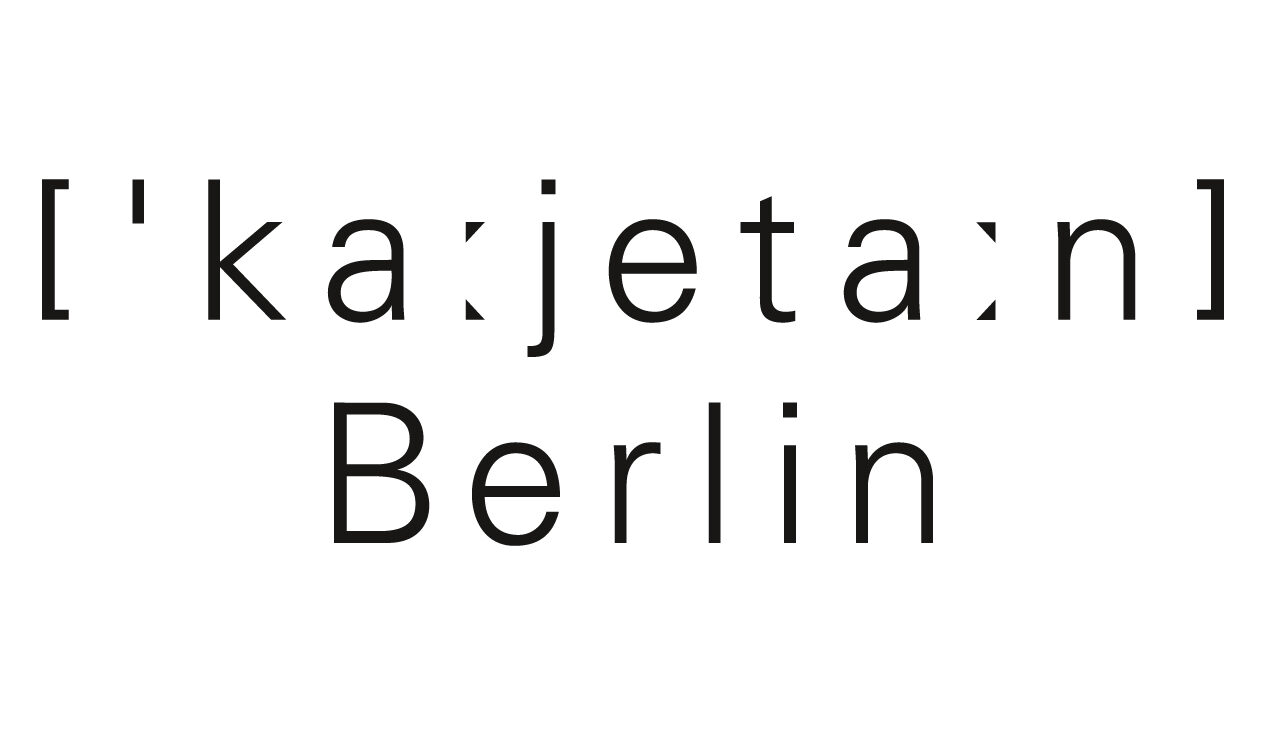23. April – 25. Juni 2022 [DANACH BIS 13. AUGUST 2022 NACH VEREINBARUNG]
Spuren auf dem Asphalt | Bilder von Shila Khatami in der Galerie kajetan
Review by Christiane Meixner about our exhibition Shila Khatamai | Strokes
Tagesspiegel, 18 June 2022 (Engl. Translation Timothy Connell, London)
Die Galerie kajetan freut sich, mit Strokes die erste Einzelausstellung der Künstlerin Shila Khatami (*1976 in Saarbrücken) in ihren Räumen präsentieren zu dürfen. War bislang industrielles Material wie perforierte Stahl-Aluminium- und Hartfaserplatten der hauptsächliche Träger und Ausgangspunkt Khatamis bildhafter Synthesen aus geometrischen Zeichen und gestischer, ausladender Malerei, so zeigen ihre jüngsten Bildfindungen eine Hinwendung der Künstlerin zur Leinwand, der Khatami mittels Großflächen-Farbwalzen, Schablonen sowie Industrie-Lacken und -Markern ihre Kompositionen aus dynamischen Formen und farbigen Bearbeitungsspuren einschreibt. Ihre neueste Serie non-figurativer Gemälde rahmt und kontextualisiert die Künstlerin gleichsam mittels zweier raumspezifischer Installationen, die den analytischen Zugang Khatamis zur Malerei bezeugen.
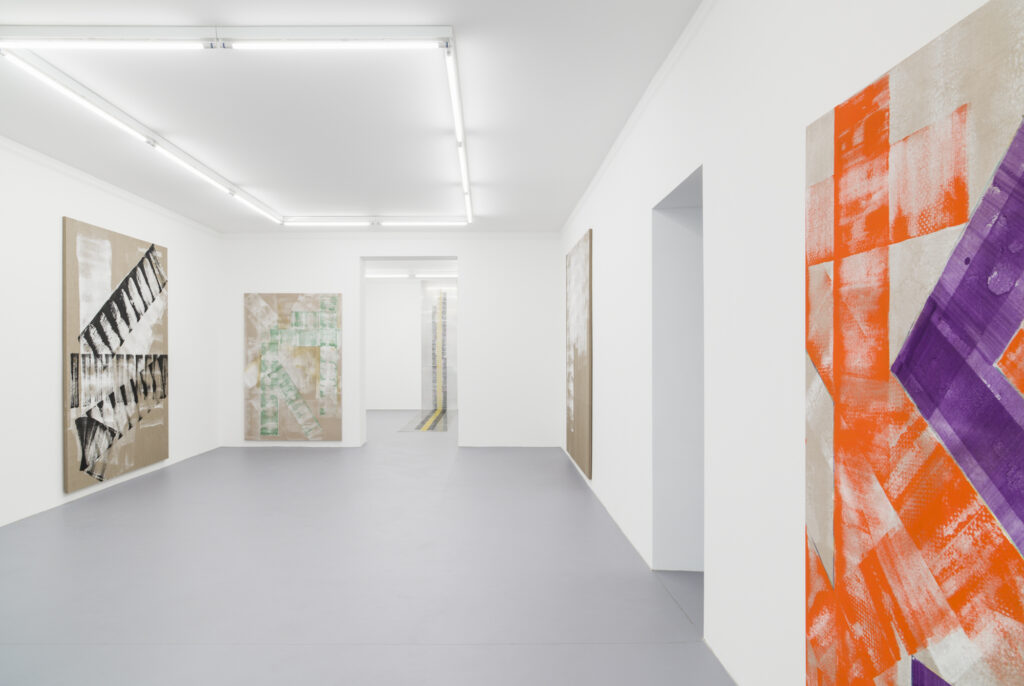
Den Auftakt zur Ausstellung bildet die in situ konzipierte Installation 7, die Shila Khatamis künstlerisches Vorgehen beispielhaft vermittelt. So griff die Künstlerin die sich an der Decke des Vorraums befindliche Form der Ausstellungsbeleuchtung auf, um sie als ein Zeichen – die Zahl Sieben – in ihrem Werk umzusetzen und wieder zur Form werden zu lassen. Dabei gilt ihr Augenmerk stets linearen und geometrischen Formen, mit denen sie auf die gerasterte Struktur des Trägermaterials malerisch reagieren kann. Eine im Alltäglichen entdeckte, zunächst bedeutungslose Form begreift Khatami in ihrer kunsthistorischen Dimension und lässt uns anhand der unterschiedlichen Ausrichtungen der imaginierten Chiffre teilhaben an ihren Reflektionen zu Gestalt und Inhalt, der je nach Lesart ein symbolisch aufgeladener sein kann.
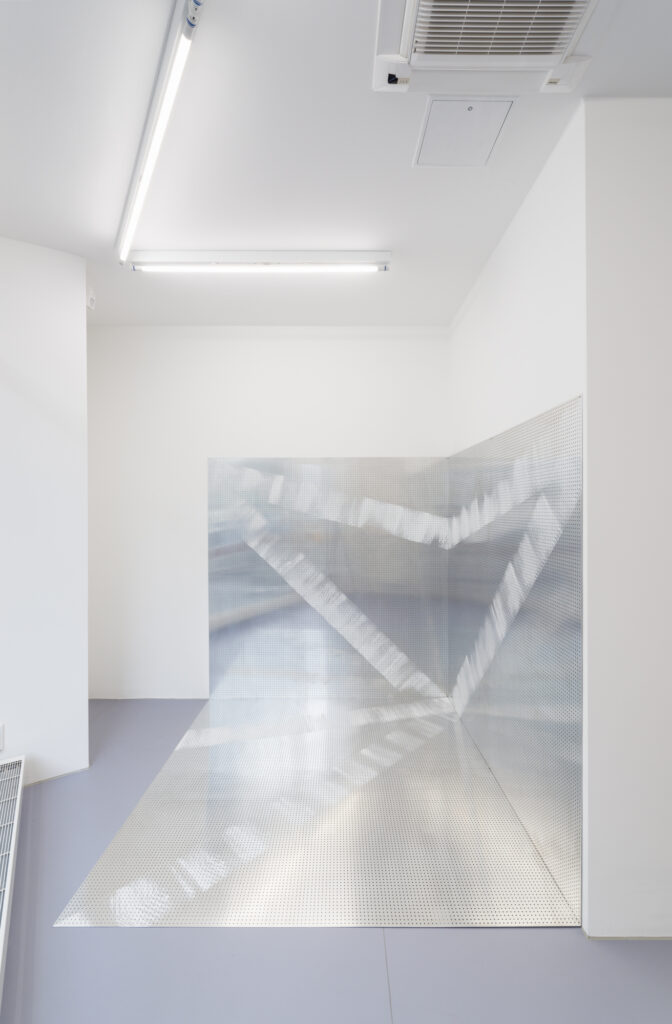
Auf den ersten Blick gänzlich ohne Verweise präsentiert sich im Folgenden die eigens für die Ausstellung kreierte Serie an Leinwänden, in denen Khatami ihren analytischen Zugriff auf das Medium der Malerei gipfeln lässt. Während die nach einem historischen, aufgrund seiner Giftigkeit nicht mehr verwendeten Pigment benannte Arbeit Mennige (2022) von ihrer leuchtenden Farbigkeit und dem dynamisch-konstruktivistischen, die Bildgrenzen sprengen wollendem Bildaufbau getragen wird, so setzen die Gemälde Azurit und Malachit (2022) in ihrer Bildwirkung ganz auf die Materialität einer aus hochtransparenten Kristallen bestehenden historischen Farbe. Aus ihrer Beschäftigung mit den spezifischen Farbformulierungen persischer Miniaturmalerei heraus, spürt die Künstlerin mit iranischen Wurzeln hier der Doppelnatur von Farbe und erinnerten Farbwelten mit den ihr heute zur Verfügung stehenden, mitunter kunstfremden Materialien nach. Dabei unterstreicht die mal durchlässig, mal deckend aufgewalzte und die Farbmotive kontrastierende weiße Grundierfarbe den Prozess der Annäherung.
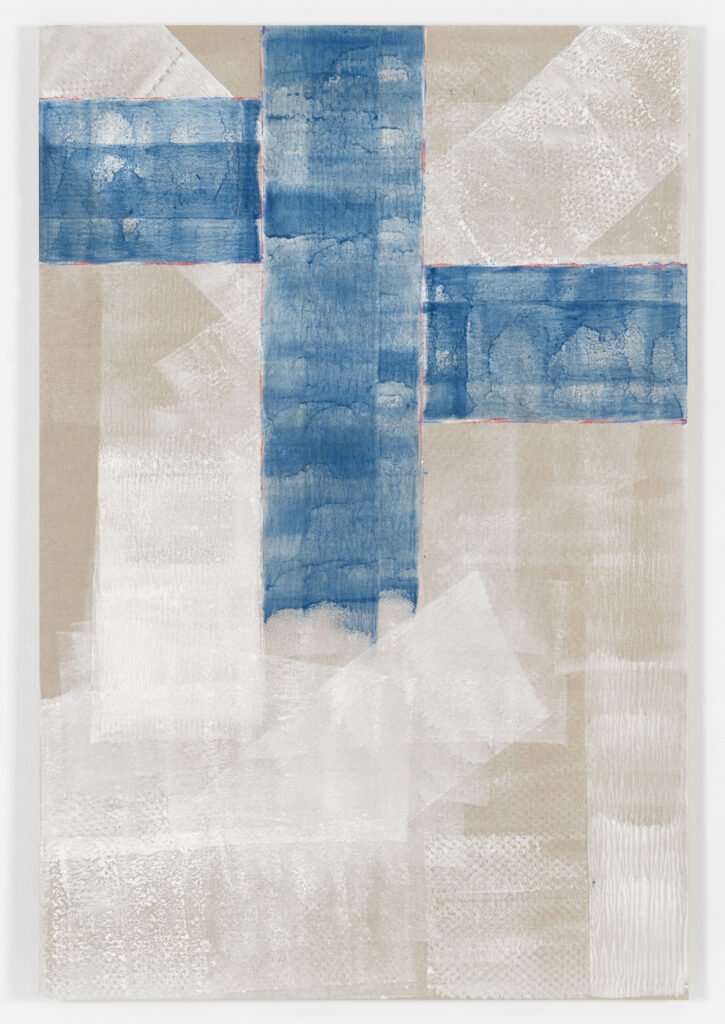
Hier sowie in Beinschwarz oder Damage Line (2022) noch unterstützend eingesetzt, wird die kreidige, dynamisch mit einer Großflächen-Farbwalze aufgetragene Grundierung in den Arbeiten Anstrich, Twins und Strokes (2022) zum alleinigen bildgebenden Ausdrucksmedium. Damit bricht Khatami mit klassischen Hierarchien innerhalb der Bildproduktion und bringt unbunte, traditionell für den Bilduntergrund bestimmte Farbe konkurrenzlos an die Bildoberfläche. Bewegen sich die Arbeiten ästhetisch zwischen dem subjektiv-gestischen Abstrakten Expressionismus und nüchternen Konstruktivismus, so unterläuft Khatami solche Zuschreibungen, indem ihre Werktitel auf konkrete Alltagsphänomene und -praktiken verweisen und damit ein narratives Potenzial entfalten.
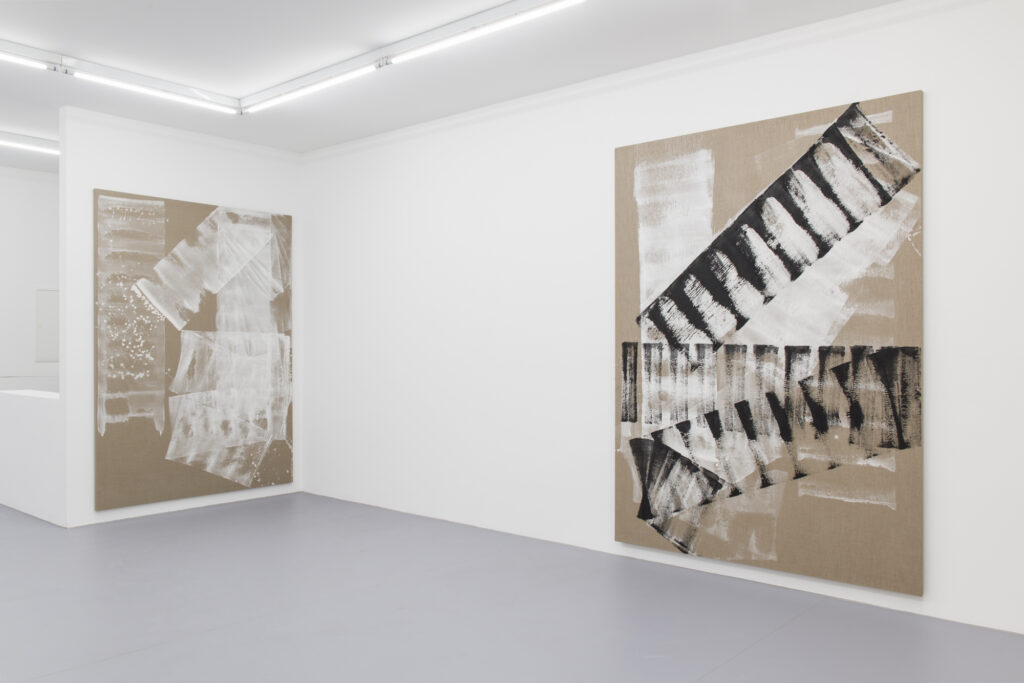
Ausgangspunkt für diese jüngsten, sehr viel autonomeren Werke bildet die im öffentlichen Raum Berlin-Weddings realisierte Wandmalerei Street Work (2021) am Lobe Block des Architekten Arno Brandlhuber (u.a.). Erstmalig hatte die Künstlerin eine nicht von ihr selbst gewählte, großformatige glatte Oberfläche zu bespielen. Hierfür bediente sie sich Großflächen-Farbwalzen, die es ihr erlaubten, mit wenigen Strokes eine große Fläche zu bearbeiten und dabei eine lineare Formensprache repetitiven Charakters umzusetzen, die von einem schnellen, gestischen Farbauftrag getragen ist. Mit formalen Rückgriffen auf ältere Arbeiten weist die Künstlerin die Wandmalerei gekonnt als ihr Werk aus und nähert sich mitsamt der verwendeten Materialien bewusst dem Feld der Graffiti-Kunst und ihren Namen-Tags.
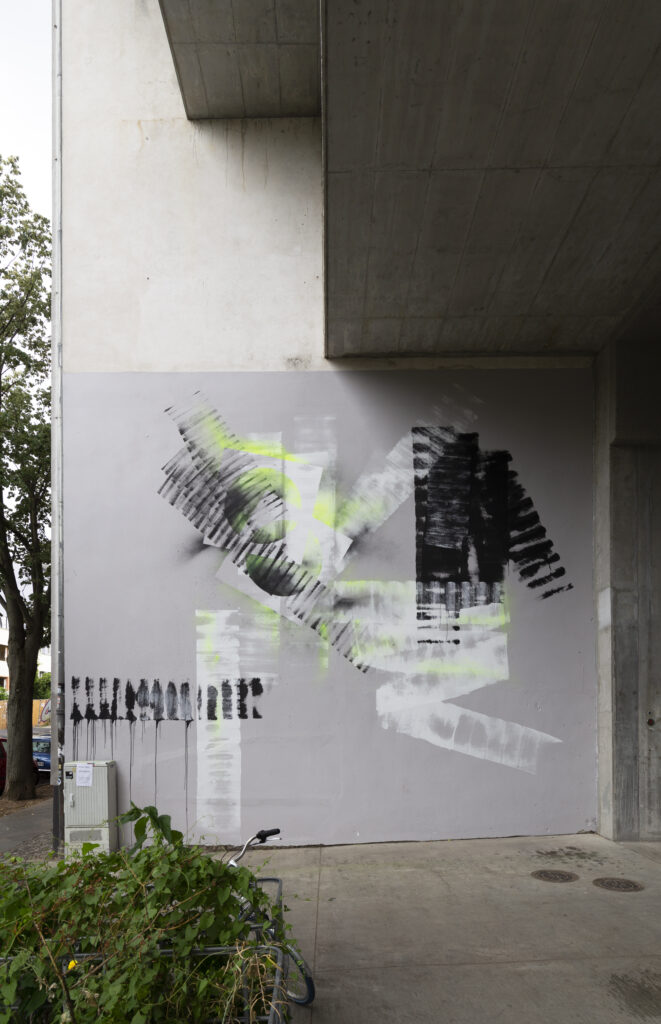
Khatami beschließt die Ausstellung mit ihrer Installation The Road (2017), die als Kommentar zum eigenen malerischen Werk lesbar wird. Die raumgreifende Arbeit zeigt eine durchgehende gelbe Linie – einer Straßenmarkierung entlehnt, die von zwei schwarzen Linien flankiert wird. Akkurat als Geraden auf Aluminiumplatten aufgewalzt, hat die Künstlerin diese im Verbund über Wand und Boden installiert und damit eine extreme Zentralperspektive inszeniert. Scheinen die Linien aus der Ferne betrachtet unseren Blick noch dynamisch in die Tiefe des Raums hinein zu ziehen, so werden sie beim Nähertreten in ihrer Vertikalität zunehmend als Barrieren empfunden, die in der Höhe ansteigen, während sich das Bodenelement optisch verlängert. Dem Gefühl der Unausweichlichkeit setzt sich schließlich das verwendete Material entgegen, das bei naher Betrachtung seine Durchlässigkeit verrät.
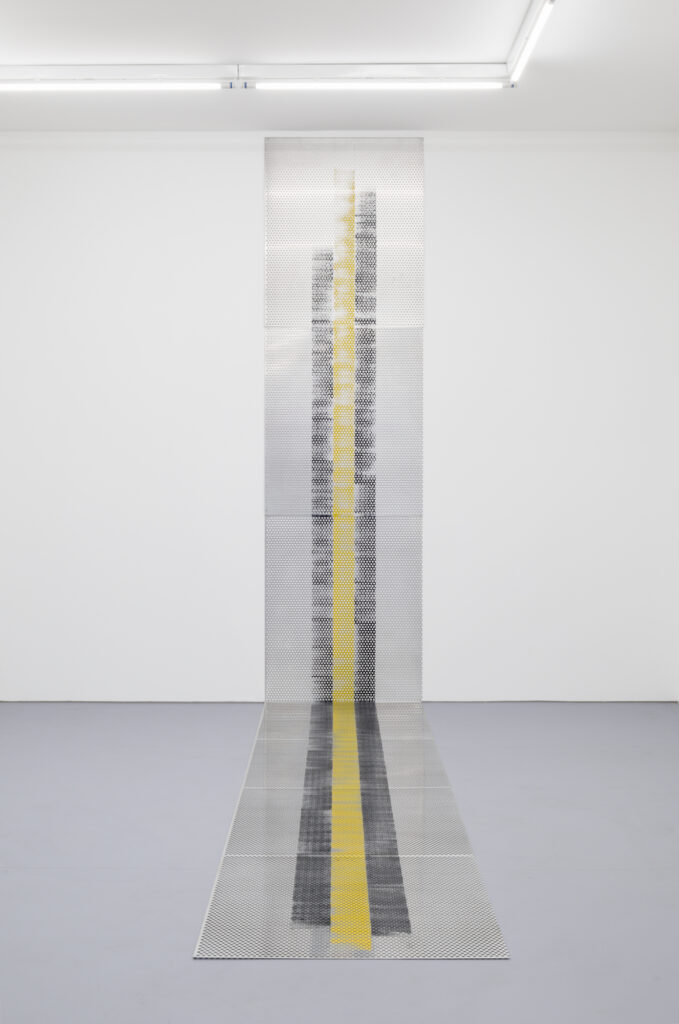
Das Spiel mit unserer Wahrnehmung öffnet hier den Blick für eine künstlerische Position, die gekonnt unvereinbar Scheinendes im Stil und Genre verbindet. Mittels kunsthistorischer wie auch kunstferner Verweise beleuchtet Khatami das eigene Ausdrucksmedium und gibt die bildgebenden Elemente in ihrer jeweiligen Geschichtlichkeit und Begrenzung preis. Dabei gelangt sie zu neuartigen Bildschöpfungen, denen sie die eigene, von urbanen und industriellen Ästhetiken erzählende Handschrift unverkennbar einschreibt und sich selbst so innerhalb der jüngsten Kunstgeschichte ganz formbewusst im Sowohl, als auch verortet.
Eliza Grabarek M.A.

Shila Khatami | Strokes
23 April – 25 June 2022 [AFTER THAT UNTIL 13 AUGUST 2022 BY APPOINTMENT]
Galerie kajetan is pleased to present Strokes, the first solo exhibition of the artist Shila Khatami (*1976 in Saarbrücken) in its space. Until now, industrial material such as perforated steel-aluminum and hard fiber plates were the main carrier and starting point of Khatami’s pictorial syntheses of geometric signs and gestural, expansive painting. Meanwhile, her most recent pictorial inventions show the artist turning to canvas, to which Khatami inscribes her compositions of dynamic forms and colored processing traces by means of large-scale paint rollers, stencils, as well as industrial paints and markers. In her show at Galerie kajetan the artist frames and contextualizes her most recent series of non-figurative paintings by two space-specific installations that testify to Khatami’s analytical approach to painting.
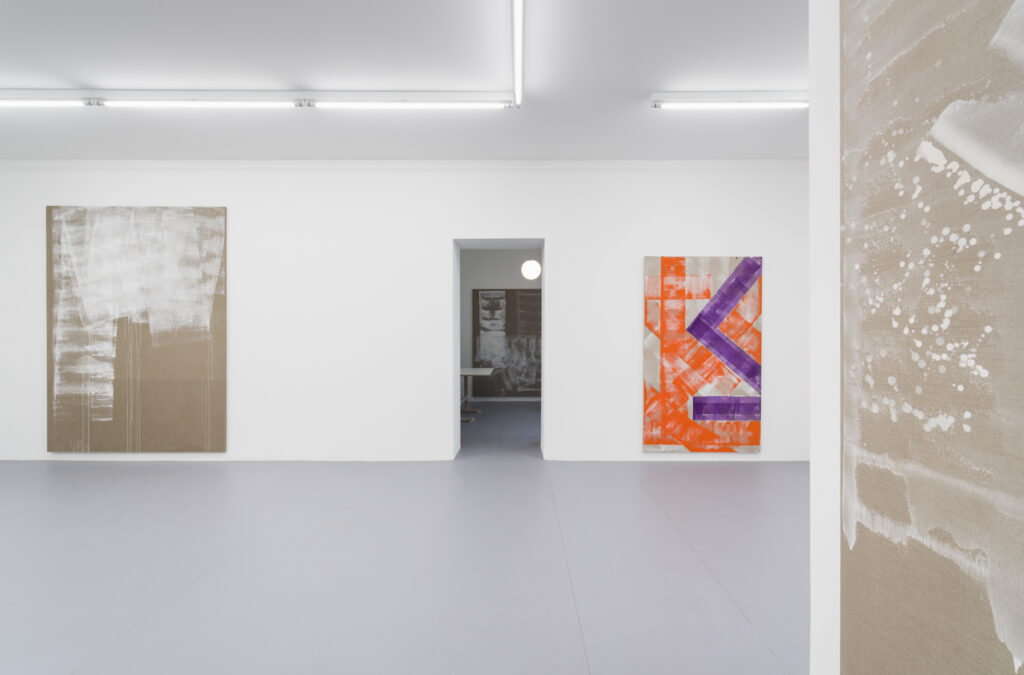
The exhibition opens with the installation 7, conceived in situ, which exemplifies Shila Khatami’s artistic approach. The artist took up the form of the exhibition lighting on the ceiling of the anteroom to transform it into a sign – the number seven – in her work and to let it become new forms through reflections. Her attention is always focused on linear and geometric shapes, with which she can react painterly to the gridded structure of the support material. Khatami grasps the art-historical dimension of an initially meaningless form discovered in the everyday and, through the various orientations of the imagined cipher, allows us to participate in her reflections on form and content, which, depending on how it is read, can be a symbolically charged one.
At first glance, the series of canvases created especially for the exhibition, in which Khatami culminates her analytical approach to the medium of painting, presents itself entirely without references. While the work Mennige (2022), named after a historical pigment no longer used because of its toxicity, is carried by its luminous colorfulness and the dynamic-constructivist pictorial structure that seeks to break down pictorial boundaries, the paintings Azurit and Malachit (2022) rely in their pictorial effect entirely on the materiality of a historical color consisting of highly transparent crystals. From her preoccupation with the specific color formulations of Persian miniature painting, the artist with Iranian roots traces here the dual nature of color and remembered color worlds with the sometimes non-art materials available to her today. The sometimes permeable, sometimes opaque white primer paint contrasting the color motifs, emphasizes the process of approach.
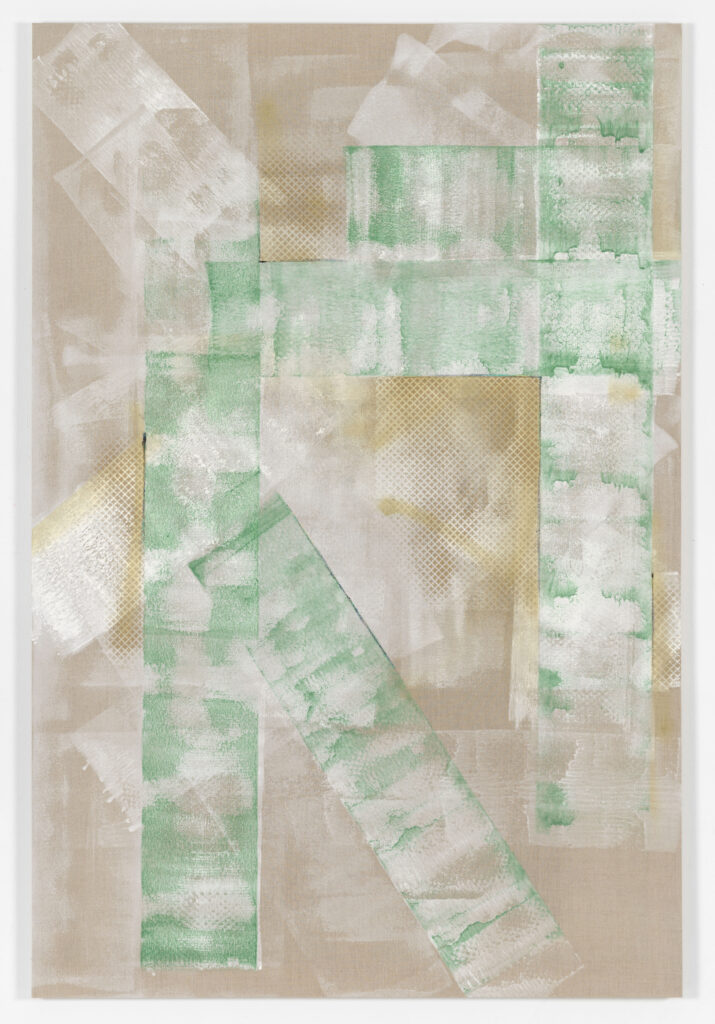
Still used here or in Beinschwarz and Damage Line (2022) as a support, the chalky primer, dynamically applied with a large-area paint roller, becomes the sole pictorial medium of expression in the works Anstrich, Twins, and Strokes (2022). In this way, Khatami breaks with classical hierarchies within image production and brings achromatic color, traditionally intended for the picture’s background, to the picture’s surface without competition. The works move aesthetically between subjective gestural Abstract Expressionism and sober Constructivism, but Khatami undermines such attributions, in that her work titles refer to concrete everyday phenomena and practices, thus unfold a narrative potential.
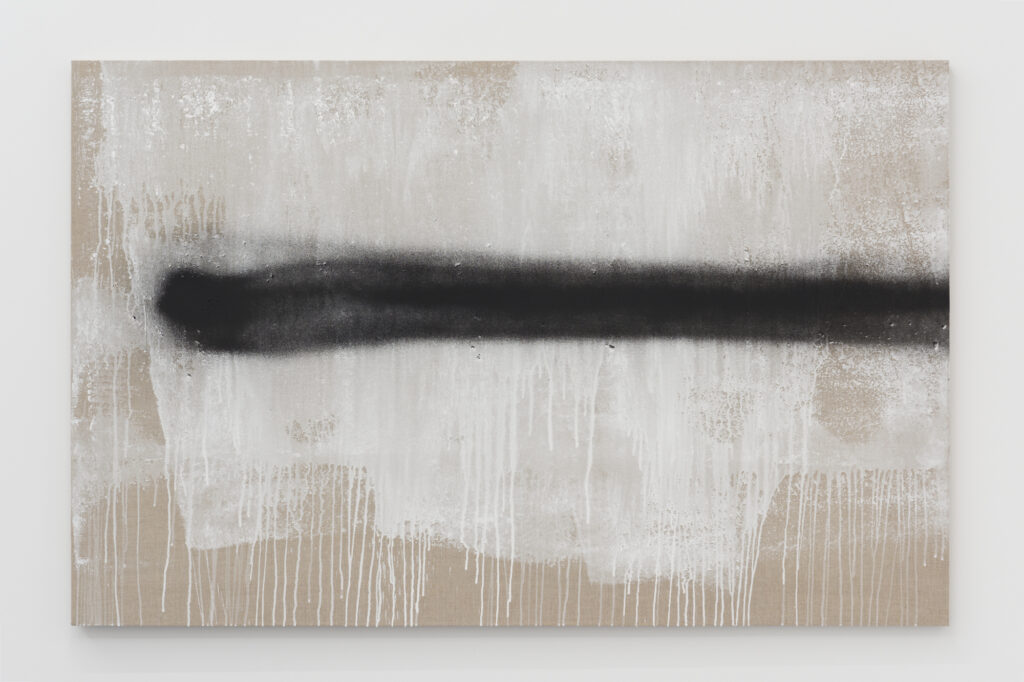
The point of departure for these most recent, much more autonomous works is Shila Khatami’s mural Street Work (2021) realized in the public space of Berlin-Wedding at the Lobe Block (by architect Arno Brandlhuber among others). For the first time, the artist had to paint on a large-format smooth surface that she had not chosen herself. For this purpose, she made use of large-format paint rollers, which allowed her to work on a large surface with just a few strokes, implementing a linear formal language of a repetitive character, supported by a rapid, gestural application of paint. With formal recourse to former works, the artist skillfully identifies the mural as her work and, together with the materials used, consciously approaches the field of graffiti art and its name tags.
Khatami concludes the exhibition with her installation The Road (2017), which can be read as a commentary on her own painterly work. The expansive work shows a continuous yellow line – borrowed from a road marking – that is flanked by two black lines. Accurately rolled onto aluminum panels as straight lines, the artist has installed them in a compound across the wall and floor, staging an extreme central perspective. If, viewed from a distance, the lines still seem to draw our gaze dynamically into the depths of the room, their verticality as we approach them is increasingly perceived as barriers that rise in height as the floor element visually elongates. The feeling of inescapability is finally countered by the material used, which reveals its permeability upon close inspection.
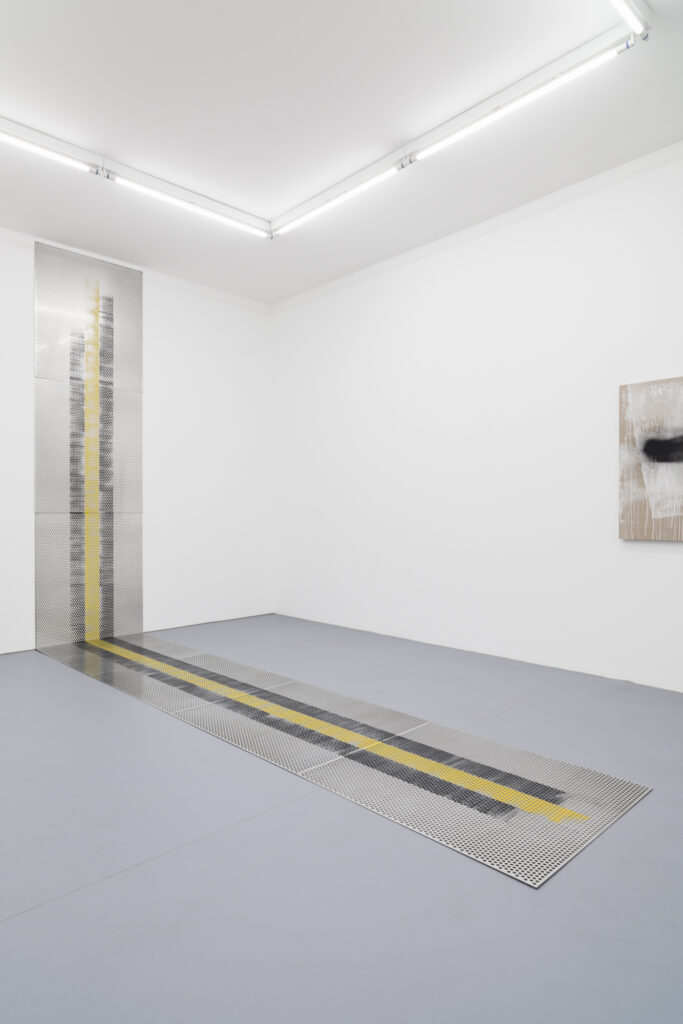
The play with our perception here opens the view for an artistic position that skillfully combines seemingly irreconcilable things in style and genre. By means of art-historical as well as art-remote references, Khatami illuminates her own medium of expression and reveals the pictorial elements in their respective historicity and limitation. In doing so, she arrives at novel pictorial creations, to which she unmistakably inscribes her own signature, telling of urban and industrial aesthetics, and thus locates herself form-consciously within the most recent art history in the As well as.
Eliza Grabarek M.A
